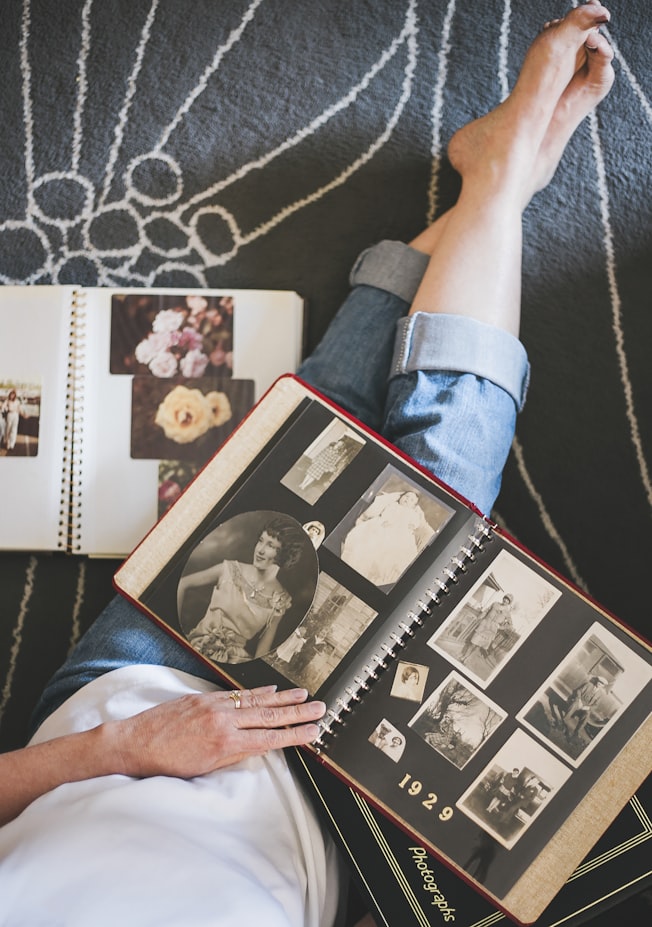Tricks to Keep Your Old Photos
Before the digital era, everyone had printed important moments of their lives in black and white or color photographs in albums that included the marriage of the parents, the 70th birthday of the grandfather, the graduation of the children, holidays with friends, and many more. In short, the photographs have a the sentimental and scientific value that most people want to keep them for years.
But like everything else in life, they cannot remain intact forever. So, in this article, you will be learning some tips to help you preserve your precious memories for a longer time.
#1: Opening the trunk of memories
During the time of traditional photography printed on paper, it happened that you could only know if you liked it or not once it was revealed and copied. So there usually are so many poses repeated, there were people with red eyes, unfocused or overexposed images, and many more. In any case, to preserve your old photos, the first thing you should do is select the best ones, discard those that could have some damage.
Then the ones you chose, separate them by theme, for example, Birthdays, Weddings, Baptisms, Holidays, etc. You will recognize the damaged material because ambient conditions and fungi can leave white spots and the damaged paper acquires a yellow color. Remember that the older the photo is, the higher the risk of suffering some damage.
#2: Enemies of your photos
Direct light (solar or artificial), humidity, high temperatures, lack of ventilation, and even frames of photo frames or album materials can affect the life of your photos. These factors can cause the image fading, stains, paper peeling, loss of brightness, cracking, among others.
Therefore, you should store your photos in a dark and cool place with a temperature below 22 degrees, away from the sun’s rays and dust, as well as grease or fingerprints. It is not a myth! The jelly of the film reacts to the elements that are in our hands
#3: Reliving your memories
If you have photos that you like but have a defect, other than fungi, you know that these can be passed to the rest of the photos, documents and even the drawers where you keep them. You can cut them out and make compositions with frames bought or made by you same and display or save them.
Digitizing them is another good option since you can have them forever, at no cost, modify them with a good photo editor, and even share them in digital formats. Then organize them on your computer so that your photos of the past coexist with the newest ones.
You can also upload them to the cloud or to online photo storage and applications designed for that. But if you are traditional and want to keep them in physical save place, you must take into account some aspects:
- The ideal humidity to keep documents, including photos, would be between 30% and 50%
- Avoid plasticizing your photos, the components of the sticky paper react with the chemicals in the photo and their characteristics gradually change
- Although it seems exaggerated, wear cotton gloves to manipulate your photos, and so your fingerprints will not be marked on them
- If you are going to place them in envelopes, folders or albums, avoid PVC plastic ones. Acid-free paper or cardboard envelopes are also the most recommended for storing negatives, cut into strips and not rolled as on the reel
- Do not use staples or clips because they oxidize and damage your graphics over time. It is also not advisable to apply stick glue since it can adhere to causing a difficult spot to clean without damaging the impression. Also, the transparent adhesive can damage them
- To make notes, do it on the back of the photo and use a graphite pencil, avoiding pressure when writing so that this is not marked on the side of the image. Or you can list the photos and put the legends in the envelope.
- When they are displayed in frames or picture frames, they should be placed on a very white cardboard sheet that prevents them from sticking to the glass and being damaged by changing the frame.
#4: A special space for your photos
If you are a professional collector or photographer, a deposit is a good option for you and your images. If you have a few hundred or thousands of graphs, a few white envelopes will not be enough to store your treasures.
In that case, it is best to have a warehouse that will help you keep them away from dust and moisture. You should consider that the best place to place them is in a box or container marked with the PAT label, which means that the materials with which they are made will not damage your photos.
